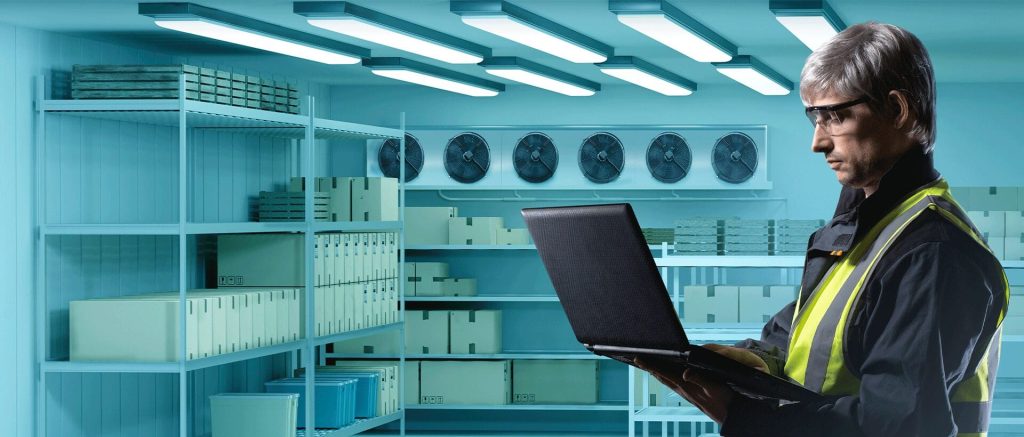Cold storage warehouses store products that require specific temperature controls from the time they’re made until they reach customers. This requires a specialized workforce that faces many unique risks.
These hazards include cold-induced health concerns like hypothermia, and slips and falls on icy floors. The key to minimizing these risks is proper training and preventative measures.
Practices
Cold storage warehouses are used to keep products that require specific temperatures in good condition from the time they’re made until they reach their intended consumers. This requires a tight control system and effective inventory management, which are both important for quality assurance and safety.
It’s essential to train employees on the proper methods for using machinery and materials in cold temperature areas, such as proper lifting techniques and cleaning up spills promptly. This reduces the risk of back injuries, musculoskeletal strain and fatigue and prevents bacterial contamination.
Workers should also take frequent breaks, so they don’t work in sub-zero or freezing conditions for extended periods of time. If they experience signs of hypothermia, such as extreme drowsiness, loss of balance or excessive shivering, they should leave the area immediately.
It’s also helpful to establish and practice contingency plans in case of power or equipment disruptions, so that entire shipments don’t spoil. This can be as simple as keeping spare forklift parts on hand to quickly replace any malfunctioning machines or establishing relationships with logistics companies that can rapidly ship frozen goods in case of delays or transportation issues.

Warehouse Safety in Low Temperatures
Cold storage warehouses and rooms create a wide array of new workplace hazards for employees. These range from cold-induced health concerns like hypothermia to ice accumulations on floors, stairs, and ladders.
While it may seem counterintuitive, fire is also a common risk in these spaces because they house large amounts of combustible goods, including frozen food and processed dairy products such as butter and cheese. These facilities also often lack sprinkler systems to quickly extinguish blazes.
Ensure that all employees have adequate work attire in cold storage environments. This includes layered clothing, gloves with gripping surfaces, and insulated footwear. Providing these necessities for workers will also help bolster productivity, as they’ll be more comfortable while performing their tasks.
Lastly, establish preventative safety protocols that include regularly checking cold storage areas for any ice buildup and properly cleaning workspaces to remove potential slip and fall risks. You should also set up clear emergency exits that open from inside the room and install a battery backed-up alarm and lighting system to ensure that employees are never accidentally locked in cold storage.
PPE for Cold Storage Workers
Cold storage facilities preserve the quality of food products, pharmaceuticals, and other goods to benefit consumers worldwide. These specialized environments, however, can pose unique health risks to workers operating within them. Regular training sessions and adherence to legal and safety standards can reduce these risks and ensure staff’s well-being.
Cold-condition protective wear is essential to combat the challenges of working in refrigerated warehouses and blast freezers. Insulated boots, insulated gloves, and moisture-repellent coveralls can mitigate the dangers of low temperatures. These items can also help workers avoid cold stress, frostbite, and trench foot.
Likewise, anti-slip tape can improve traction on icy or slippery floors, especially in areas with frequent foot traffic and entrances to coolers and freezers. Tape can also be used to mark walkways, warning zones, and other hazards in cold storage areas.
Fire remains a significant threat in cold storage warehouses and rooms, particularly as they often house combustible materials such as cardboard boxes and styrofoam trays. Putting in place sprinkler systems and regularly testing them to prevent false alarms is a critical first step to reduce the risk of fire in a facility.
Slip and Fall Prevention in Warehouses
Slips and trips are a common workplace injury in kho cap dong cong nghiep. Although these accidents may not be as dramatic as a forklift collision, they can cause serious injuries including broken bones and concussions. To reduce this risk, ensure that your facility is fit-for-purpose and regularly inspected for trip hazards. Also, invest in anti-slip floor tape and mats designed to increase traction in high-risk areas such as entrances and doorways. Install these alongside signage that urges caution or highlights hazard zones to help keep workers safe.
Cold storage facilities have unique hazards that require specialized safety protocols to mitigate. These include cold stress, where greater bodily heat loss occurs in the cold environment leading to the onset of hypothermia or frostbite. To prevent this, ensure that employees wear PPE to protect against cold conditions and have easy access to hot drinks and warmers to prevent dehydration. Additionally, ensuring adequate lighting throughout the warehouse is crucial to preventing accidents.
Cold Storage Emergency Protocols
Cold storage warehouses and low-temperature rooms present unique safety challenges. From cold-induced health concerns like hypothermia to slippery floors and mechanical hazards, there are many issues that must be addressed in order for the industry to operate efficiently.
Fire remains a major risk in these spaces because the products stored are often combustible. Frozen foods and processed dairy products are common examples, as are cardboard boxes and polystyrene trays. In 2017, a fire destroyed a 60,000-square-foot refrigerated storage facility in Wausau, Wisconsin, that was used to store specialty cheeses.
Businesses should install sprinkler systems and test them regularly to ensure they work properly. They should also educate employees on how to respond in the event of a fire. This may involve evacuation procedures and instructions on where to go or who to call. Finally, companies should develop and communicate emergency protocols for power failures, equipment malfunctions, fires, and medical emergencies in their facilities. This can help reduce the response time and minimize potential safety risks.

